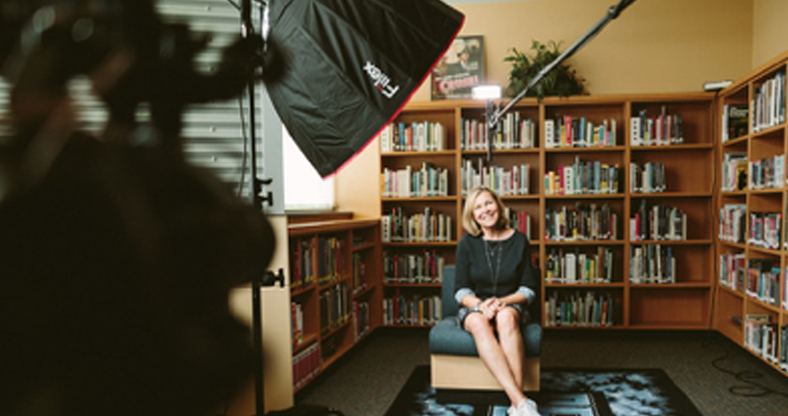
Whenever you ask someone to sit down in front of the camera for an interview, chances are you’ll get some variation of the same response: “I’m so nervous, I don’t know why I’m here!”
It’s not surprising, since even the most practiced public speaker might not be used to sitting down and speaking in front of a camera.
Getting great video content out of a nervous interview subject is no small task, but it doesn’t have to feel like pulling teeth either. Here are five simple tips to help your subjects feel like movie stars:
1. Build Rapport
Whether your interview subject is someone you’ve never met or someone you’ve known for years, sitting down across from them and switching on the camera will create a unique dynamic.
If possible, strike up a conversation via text or email first to familiarize yourself to the subject. When you start the interview, ask your subject a few softball questions to get them comfortable in their seat.
2. Relax
The most critical part of putting your interview subject at ease is to be at ease yourself.
When people are nervous and uncomfortable, they’re likely to mimic the behavior of others to put themselves at ease. If you’ve built rapport with your subject and are demonstrating that there’s nothing to be concerned about, they’re likely to mimic your relaxation and open up on camera.
3. Give Gentle Reminders
There are a few best practices you should remind your subject about, but you don’t want to make them self-conscious.
For instance, at the start of the interview, remind them that they should repeat the question in their answer. If you ask, “Why is this association so important,” their response should be “Our association is important because …”
Be sure to listen for filler words in their response, such as “so,” “um,” “like” and “uh.” If they don’t give enough context for their answer or if they pause too frequently, ask them to repeat their answer for safety so the editor has options to choose from.
4. Be a Good Listener
The best interviewers are great listeners. When your subject is giving their answer, practice active listening: engage at key points, smile and nod occasionally, and encourage their thoughts as they express them.
While you might have a list of questions to ask, sometimes the best video content comes from diverting from the script and asking your subject to elaborate on an unexpected point they just made.
5. Remind Them They’re the Expert
The key thing to remind your interview subjects of while you’re talking to them is that you’re not going to ask them anything they don’t already know—after all, you wouldn’t have asked them to be on-camera for this particular interview if they didn’t have knowledge to share on the subject.
This reminder can help a particularly nervous subject feel confident in the responses they’re offering. If your subject is struggling to articulate an answer to a question, move on to the next one on the list and come back to the first question later. They might find it easier to express themselves after they get more comfortable in their seat.
The main thing to keep in mind while you’re sitting behind the lens is that your subject is looking to you for guidance. If you’re unhappy with how the interview is going and you let it show, your subject is likely to clam up and make getting through the rest of the question list feel like pulling teeth.
Follow these tips and you’re certain to film an interview that people will remember. If you still have questions, don’t hesitate to contact us at Association Studios. We’d love to help out.
This Article was written by
It is a long established fact that a reader will be distracted by the readable content of a page when looking at its layout. The point of using Lorem Ipsum is that it has a more-or-less normal distribution of letters.
